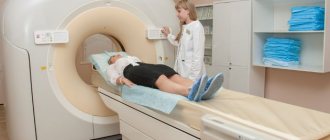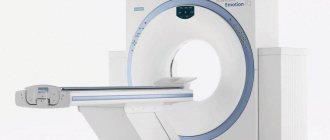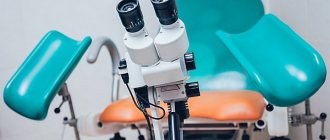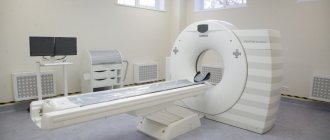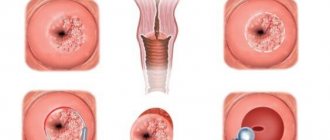Magnetic resonance imaging (MRI) is one of the safest diagnostic methods. However, it has a number of contraindications. Wearing braces is not one of them. But there is enough information on the Internet that MRI with braces not only causes discomfort, but is also harmful to health. Is it really? To understand this, you need to know how a tomograph works.
What patients with braces need to know about MRI
The MRI method is based on studying the behavior of hydrogen atoms in the human body under the influence of electromagnetic pulses. Diagnostics proceeds according to the following scheme:
- An MRI machine creates a constant magnetic field
- The nuclei of hydrogen atoms in different tissues of the body react to it differently
- By resonating, hydrogen atoms change the field of the tomograph, resulting in the formation of an image
- A special program helps to read information.
In patients with braces, doubts are associated with the magnetic field of the device. After all, all magnets have the property of attracting metals. And most braces systems are made using metal alloys. So stories appeared, one more terrible than the other.
The outrageous Dr. House from the series of the same name contributed his share to the development of this line of stories. There is a well-known plot of the film in which an MRI was performed on a patient with tattoos. During the procedure, they became very hot, as they were made using pigments with metallic components.
What is the procedure?
MRI is one of the methods of modern non-invasive diagnostics. The method is based on the response of hydrogen atoms of internal tissues and organs to the influence of a powerful magnetic field. The equipment detects when hydrogen atoms change their position and transmits the image to the screen in the form of a three-dimensional picture.
The MRI equipment itself is a large cylinder with holes at both ends. Inside, the device is equipped with a movable table on which the patient lies during the examination. There are several options for tomographs:
- Open.
- Closed.
- Partially open.
In open tomographs, as a rule, very obese patients are examined, as well as patients suffering from severe claustrophobia.
The tomography procedure must be carried out completely motionless, therefore, to ensure immobility, the patient is fixed with special belts. To get a complete and detailed picture, you need to take several pictures. Each shot takes some time, and the entire procedure can last from 20 to 50 minutes.
Despite the fact that the tomography procedure is absolutely painless and does not cause harm to health, it is often undesirable to do it. Firstly, the cost of tomography is quite high, and secondly, such a study requires a certain amount of time. If the tomography shows an unreliable result for a patient with metal braces, the procedure will have to be repeated.
How metal braces behave in a magnetic field
This is not the only “horror story”. They say that during an MRI, the braces become red-hot and patients receive electric shocks. Moreover, it feels like your jaw is being ripped out. Is it really? Is it possible to do an MRI with braces ? Let's try to figure out how safe this procedure is.
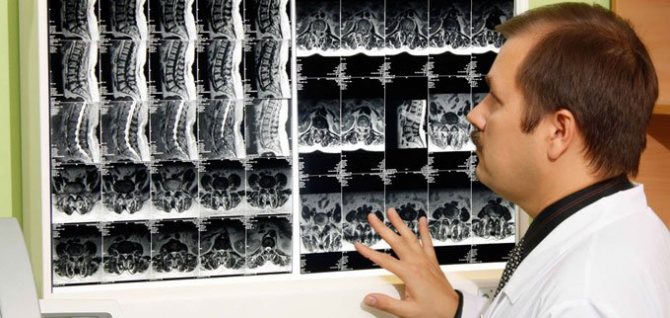
Braces will not get any worse after the procedure. They will not melt or even deform. This does not mean that the tomograph does not react to metals. But he responds to them differently.
All these stories about terrible pain are myths, and nothing more. Metal parts in the human body do not change their properties under the influence of a magnetic resonance imaging scanner.
The metal parts of bracket systems resonate with the magnetic field of the tomograph, affecting the quality of the study and contributing to the appearance of artifacts.
Photos may have spots, background blur, and results may not be accurate. But this is not at all necessary, it all depends on what organ or part of the body needs to be examined.
Common Misconceptions
Among patients themselves and on Internet forums, you can come across a lot of statements regarding the compatibility of MRI examination and braces.
Many of them are shocking with negative consequences for human health, others talk about obtaining a 100% inaccurate result. Much of the information is inaccurate and unsubstantiated.
The most common misconceptions are:
- During examination, the metal becomes quite hot and magnetized , causing the structure of the braces to collapse. In reality, nothing like this happens. Magnetic radiation does not heat up the correction device, and the magnetization effect is so small that it is not felt.
- Metal parts may damage tooth enamel during examination .
Modern braces are small in size and cannot move and injure the oral cavity during the diagnostic process. Only large structural elements made entirely of metal can become very hot, move and cause injury to the oral cavity. But today, in the manufacture of large parts, paramagnetic materials, which are passive in relation to the magnetic field, are usually used. - The result of the study will be greatly distorted .
This statement is only half accurate. Braces can affect the results and interfere with the diagnosis of only the part of the body in which they are installed. Therefore, if you perform an MRI of the head with an orthodontic system installed, the results will indeed be incorrect. In this case, radiography or angiography will be more informative. - During diagnosis, the patient feels electric shocks . In addition, they say that hot braces leave burns on the mucous membrane and soft tissues. In practice, not a single similar case has been recorded. The examination is absolutely painless.

Sometimes patients feel slight discomfort from lying on a hard surface for a long time, fatigue, and numbness due to being in one position for a long time. When a contrast agent is injected to confirm the diagnosis, you may feel cold during its administration.
Important! In isolated cases, there is a slight tingling sensation in the body, warmth in the examined area, slight dizziness, nausea, vomiting, and headache. These phenomena are considered in medicine to be a normal reaction of the body to the procedure.
The only negative consequence of MRI is a distortion of the actual picture of the patient’s health condition.
A physician will not be able to make an accurate diagnosis based on tomography data or select an acceptable treatment for a particular patient. The procedure does not pose any risk to the health, much less the life of the person being examined!
In the video, a specialist will express his opinion on the possibility of performing an MRI in the presence of braces.
Effect of braces on MRI results
If you are going to use a tomograph to diagnose the lumbar spine or limbs, then you don’t have to worry: the procedure will take place without complications. You can safely do MRI with braces on other areas of the body distant from the skull.
Difficulties arise with MRI of the brain and jaw. Braces can distort the actual appearance of images of the facial area or brain.
But this only applies to dental systems made of metal. Before making an appointment, ask your orthodontist what your braces are made of. Perhaps there is nothing there that would affect the quality of diagnosis.
Is there any harm to the body?
We have found that there is no pain or discomfort during diagnosis with braces or retainers on the teeth.
However, patients are worried that there is some “hidden threat” from such procedures and the dangerous consequences are macroscopically invisible and will certainly appear in the future. Doctors assure that such a judgment is erroneous - there is no harm from the research.
Magnetic field braces do not become magnetized, are not deformed, and do not change the bite or position of the teeth.
The structures do not adversely affect the brain and sensory organs. The main thing that is recommended to be wary of is ignoring contraindications to the study.

Important are the 1st and 3rd trimester of pregnancy, the presence of an insulin pump or pacemaker (devices break due to the magnetic field).
Which metals do not react to MRI?
If you have braces, be sure to tell your radiologist before the procedure. Some models of MRI machines have several operating modes. If the doctor has all the information, he will be able to conduct the research to the highest quality.
Most dental structures do not respond to the magnetic waves of a tomograph, because they are made of polymer alloys.
The chemical and physical properties of different metals can differ dramatically. Absolutely “indifferent” to the magnetic field:
- materials with ferromagnets;
- titanium structures.
If the patient feels any discomfort during the procedure, the study can always be stopped. Before the diagnosis begins, all patients are given signaling devices that allow them to report their feelings at any stage.
How a CT scan is done in the clinic: a detailed description of the procedure
Depending on the type of machine that will be used for CT in a particular clinic in St. Petersburg, you will be laid on a couch or placed in front of the device in a certain position. The diagnostician must pay the closest attention to choosing the position of the patient during CT: to obtain high-quality images, the beams from the unit must accurately hit a certain area of the face. After preparing for the examination, the specialist will definitely ask you not to move during the entire time required for a dental CT scan.
But there is no need to worry: you will need to remain motionless for a very short time. An image of even two jaws is completed in less than one minute, and the doctor can receive about 200 clear and high-quality images of the jaw, on the basis of which the computer will create a three-dimensional model.
What to do if braces distort research results
You should know that the likelihood of diagnostic errors increases only if the braces fall into the magnetic field of the tomograph. Sometimes radiologists play it safe and suggest removing braces before the examination. But anyone who has encountered the procedure of removing them knows how difficult it is.

Find out if your practice does MRI with braces, how often it happens, and what the results are. Consult your doctor, perhaps in your case MRI should be replaced with computed tomography (CT)?
CT is a modern X-ray examination. And the braces react absolutely indifferently to x-rays.
But if an MRI examination is vital for you, and it cannot be replaced by other diagnostic methods, remove your braces. This way you will get a complete picture without artifacts.
Alternative research
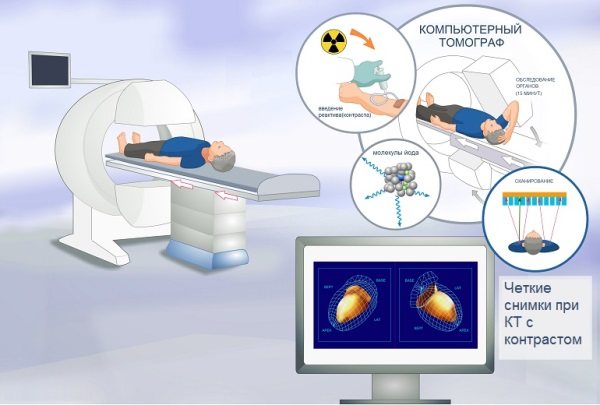
If it turns out that the braces are made of metal, the attending physician will prescribe an alternative examination - CT (computed tomography), which is not interfered with by the magnetic property of the orthodontic structure.
Diagnostics is performed using a tomograph - a device that emits X-rays that allow you to evaluate the space being studied at different angles of inclination.
.
These rays are recorded by special sensors that transmit the received information. Subsequently, these images are processed and clear three-dimensional images are obtained, from which the examined organ can be studied in detail.
Main advantages of CT:
- X-rays do not cause adverse reactions.
- The amount of radiation exposure is minimal and does not pose a risk to general health.
- Allows you to diagnose changes in tissues that cannot be detected by other methods.
- It has an extensive list of indications for use.
CT has been proven to be highly effective in detecting malignant neoplasms, pathologies of the heart and blood vessels, pelvic organs, and infectious lesions. This diagnostic technique allows, in case of injuries, to detect injuries to the lungs, kidneys, heart, spleen, blood vessels and other organs.
CT is often used to perform biopsies or carry out therapeutic and diagnostic procedures. This study also allows you to monitor the result of a complex surgical intervention and draw up a plan for further treatment of the patient.
Important: computed tomography always gives an accurate and clear result, but MRI is considered by doctors to be the most effective diagnostic method.
How realistic is it to install braces under compulsory medical insurance and is there a chance to reduce the cost of the treatment process?
In this publication, we will take a closer look at the Ormco braces system.
Follow the link https://orto-info.ru/sistemyi-vyiravnivaniya-zubov/breketyi/dlya-podrostka-skolko-stoyat-i-tsena-lecheniya.html to find out which braces are best for a teenager to choose.
Braces and MRI - harmful or not?
Braces are not an absolute contraindication to the procedure. Occasionally during the examination, unpleasant sensations appear in the jaw area. But they can be caused by self-hypnosis, vibration of the device and the duration of the diagnostic process.
Sometimes braces contribute to the appearance of distortions in photographs. In this case, you can simply repeat the study. If the results do not improve after this, remove the braces or use another diagnostic method, such as a CT scan. Don't forget to consult your doctor before the procedure.
Sources used:
- Hornak J.P. Fundamentals of MRI (1996-1999)
- Vadim Kuperman. Magnetic Resonance Imaging: Physical Principles and Applications. — Academic Press, 2000.
- Vazhenin A.V., Vaganov N.V. Medical and physical support of radiation therapy. - Chelyabinsk, 2007.
The main thing to know is what braces are made of.
It is important to know the chemical composition of the structure - if metal is visible externally, this is not considered a limitation. The study is contraindicated only in the presence of steel braces, which are rarely installed.
More often, clinics use alloys based on:
- titanium;
- plastic;
- ceramics.
These materials do not affect the magnetic field in any way, so you can safely sign up for the study.
But if the ceramic structure is supported by a purely iron frame or there are similar implants in the teeth themselves, MRI is contraindicated.
Patient actions when results are distorted

Once braces are exposed to a magnetic field, the risk of misdiagnosis increases significantly. In some cases, doctors performing the procedure ask to remove braces to ensure an accurate diagnosis. However, this is not always possible.
If there are vital indications, the patient is recommended to remove the structure in advance, or use other diagnostic options. Without this, the clinical picture will suffer from unreliability.
How to prepare for an MRI of the brain?
No special, lengthy preparatory manipulations are required before the session, but a number of recommendations should be followed to ensure that the MRI of the brain is comfortable and without complications. First, be sure to warn your doctor about the presence of permanent metal implants. If it is possible to remove such parts for a while, this should be done in advance, for example, visit the dentist and remove the braces. Before going to the clinic, leave all body jewelry at home.
Secondly, take care of comfortable, loose clothing for the duration of the procedure. The diagnosis is carried out in a lying position, so items of clothing should not hinder movement (a miniskirt and skinny jeans will definitely not fit). Clothes should not have metal fasteners, buttons, belts, etc. Check your pockets for lost keys, small change, magnetic cards, etc.
Before going for an examination, you need to prepare the necessary medical documentation, including a referral from the treating specialist, a card or an extract from it, the results of other studies and previous photographs, if available.
It is better for women to avoid wearing makeup on this day, as many cosmetic and decorative products contain metallic inclusions. Before screening, each patient will have to complete a written questionnaire regarding health issues. This is required to identify cases of allergies to medications, chronic diseases that prevent the use of contrast, and other disorders that are subject to a ban on tomography.



